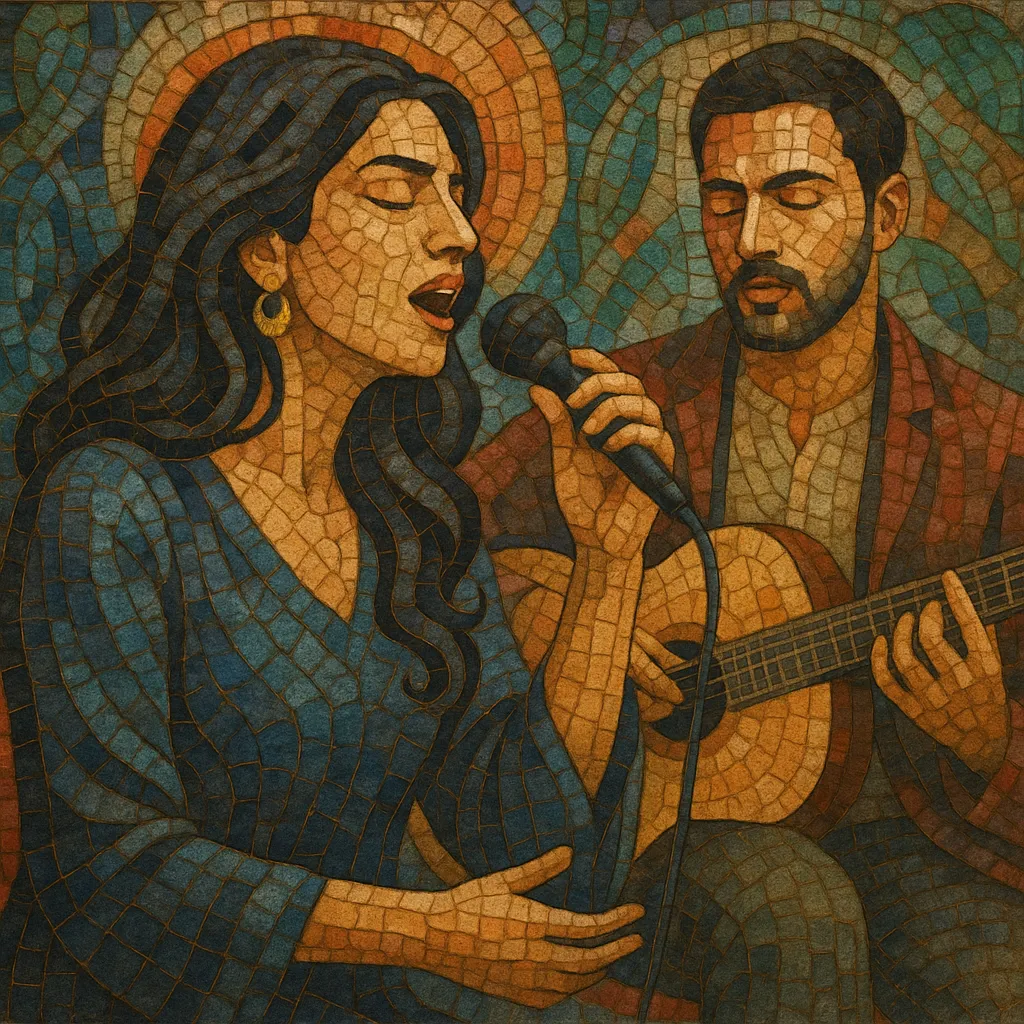Persian pop (Iranian pop) blends Western popular music forms with Persian melodic systems, poetic lyricism, and distinctive vocal ornamentation. It emerged in urban centers like Tehran, where nightlife venues, radio, and television fostered a modern sound that stayed rooted in Persian aesthetics.
The genre spans romantic ballads and dance-floor anthems, often using a 4/4 or Iranian 6/8 groove, lush string arrangements, and memorable choruses. Singers typically deliver expressive lines that borrow from classical tahrir (ornamented vocal runs) while staying within accessible pop song structures.
Persian pop took shape in the 1960s as Iran urbanized and media expanded. Early stars absorbed Western pop, rock, jazz, and soul, while anchoring melodies in Persian dastgāh/modal practice. Television programs and popular venues in Tehran helped standardize a modern band setup with strings, guitars, and emerging electronic instruments.
The 1970s are widely considered a golden era. Artists released hit singles and LPs that fused disco and funk grooves with Persian melody and poetic lyrics. Studios adopted multitrack production, string sections, and synthesizers, producing glamorous, radio-friendly records that became cultural touchstones.
Following the 1979 Iranian Revolution, mainstream pop performance and distribution were heavily restricted inside Iran. Many artists emigrated to Los Angeles, London, and other hubs, where a vibrant diaspora scene sustained Persian pop through independent labels, satellite TV, and cassette culture.
The 1990s saw improved recording technologies and wider global distribution. Diaspora producers incorporated dance-pop and synth-pop aesthetics, while a new generation inside and outside Iran crafted polished ballads and uptempo tracks. The signature Iranian 6/8 rhythm remained central, now paired with digital drums and contemporary arranging.
Today, Persian pop is a transnational ecosystem. Artists draw on EDM, R&B, and hip hop production, yet retain Persian melodic contours and lyrical sensibilities. Streaming platforms and social media allow rapid circulation, keeping the style current while preserving its emotive vocals and danceable grooves.
Start melodies in Persian modal frameworks (e.g., Mahur, Shur, Homayun), then harmonize with accessible Western pop chords. Many productions use equal-tempered harmony while hinting at microtonal inflections through melodic bends and ornaments rather than strict quarter-tone harmony.
Use steady 4/4 for pop ballads and club tracks, and the hallmark Iranian 6/8 (shish-o-hasht) for dance songs. Layer handclaps and percussion accents on offbeats to propel the groove, and consider subtle syncopation borrowed from funk and disco.
Combine Western rhythm section (drum kit or drum machine, electric bass, guitars, keyboards/synths) with Persian colors (santur, setar, tar, ney, kamancheh) and string sections. Synth pads, arpeggiators, and tasteful leads complement the lush arrangements typical of the style.
Write Persian-language lyrics focusing on love, longing, nostalgia, and diaspora. Perform with clear diction and expressive tahrir (ornamental runs and glides), balancing emotive phrasing with pop clarity. Backing vocals and call-and-response hooks strengthen choruses.
Aim for verse–pre-chorus–chorus song forms, with a memorable, singable hook. Use modern pop production—tight low-end, layered pads, and bright highs—while preserving warmth in strings and vocals. Tempo ranges commonly sit around 85–105 BPM for ballads and 105–125 BPM for dance-oriented tracks.
Employ transitional risers and drum fills into choruses, introduce Persian instruments as motifs or countermelodies, and automate reverb/delay to spotlight vocal ornaments. Keep the mix spacious so lead vocals and strings retain emotional impact.


